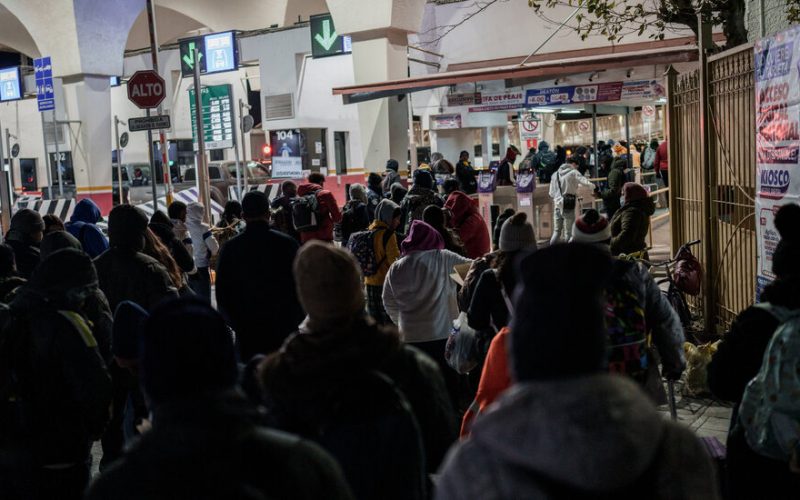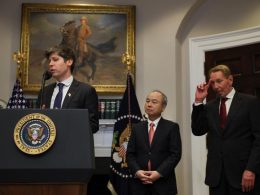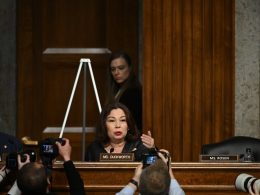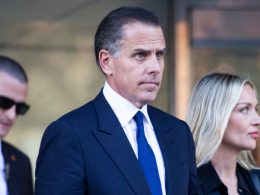President Trump kicked off his second tour of the White House on Monday with a spate of executive orders that aimed to seal off the nation from immigrants by closing off legal channels for migrants to enter, especially access to asylum.
In one of his first executive orders, called “Securing Our Borders,” Mr. Trump directed his administration to end programs former President Joseph R. Biden Jr. put in place that gave migrants opportunities to apply for asylum once they were in the United States. He also reprised restrictive orders from his first administration that Mr. Biden had reversed or ended while in office.
“Millions of illegal aliens from nations and regions all around the world successfully entered the United States where they are now residing, including potential terrorists, foreign spies, members of cartels, gangs and violent transnational criminal organizations and other hostile actors with malicious intent,” Mr. Trump wrote in the order.
Mr. Trump spent much of his first term focusing on the idea of building a wall to keep out migrants. But his actions this week to change border policies had a much more immediate and far-reaching impact, effectively closing off the country to migrants, including those fleeing persecution and violence.
Here is how his plan works.
Trump shut down an app to facilitate orderly entries.
Minutes after Mr. Trump took the oath of office, his team disabled CBP One, a government program that allowed migrants to secure appointments to enter the country. The Biden administration used the smartphone app, initially developed by the first Trump administration, to provide a safe and more orderly way to cross land borders into the country without having to risk their lives sneaking across the Rio Grande, for example.
Migrants were given parole, which gave them temporary permission to be in the country. They were also given permission to work. Mr. Trump included this directive in his broad “Securing Our Borders” order.
Deactivating the program on Monday sent some 30,000 migrants with existing appointments into limbo, and left them and future migrants without an orderly way to come into the country.
Trump ended humanitarian parole for certain nationals.
In another “Securing Our Borders” directive, Mr. Trump canceled a Biden-era program that allowed people from Cuba, Haiti, Nicaragua and Venezuela to apply for humanitarian parole on the condition that an American pledged to provide the applicant with financial support. If the migrants from these countries, experiencing humanitarian crises, qualified for the program, they would fly into the United States and stay for two years, with permission to work. While in the country, they could apply for asylum or other benefits. As of late last year, more than 500,000 migrants had entered the country through the initiative.
Trump ordered migrants to wait in Mexico.
Another directive in Mr. Trump’s broad “Securing Our Borders” order, is to reinstate a program he created during his first term called the “Migrant Protection Protocols,” which is known as the “Remain in Mexico” policy. It forces certain migrants to wait in Mexico while an American immigration judge decides their case.
It was one of the more contentious programs during his first administration because it effectively forced migrants seeking asylum to live in unsanitary conditions while they waited for their claims to be heard. Many reported being victims of kidnapping, extortion and rape.
The legality of it faced court challenges throughout the first Trump administration. By the time Mr. Biden was president, the Supreme Court planned to take up the case. But the Biden administration stopped defending the program, and the Supreme Court never issued a definitive ruling on its legality. Mr. Biden also stopped using the program.
If advocacy groups file another court challenge, now that Mr. Trump has reinstated it, it is likely to end up in the Supreme Court quickly.
To start using the Remain in Mexico program again, the Trump administration needs Mexico’s permission for people seeking asylum in the U.S. to wait it out on its side of the border. So far, Mexico has said it is not in favor of restarting the program but agreed to find a way to work with Mr. Trump.
The Supreme Court agreed to hear the case, but Mr. Biden stopped the administration’s legal defense of the program when he took office, and there was never a definitive ruling on its legality. Mr. Trump would need Mexico’s approval to resurrect the program. Mexico has said it does not support bringing it back.
The president declared border crossings an ‘invasion.’
In a separate executive order, called “Guaranteeing the States Protection Against Invasion,” the president said that the illegal crossings at the country’s southern border had reached the point of being an invasion, as defined in the Constitution, which says the United States must guarantee every state protection against invasion.
Mr. Trump said so many people were coming from so many different countries that it was impossible to thoroughly screen them for health problems and criminal histories. He invoked broad authority from the Immigration and Nationality Act, which is the main law that governs the country’s immigration system, to order that noncitizens would no longer be allowed to enter the country through the southern border, until he decides the invasion is over.
“Entry into the United States on or after the date of this order of aliens engaged in the invasion across the southern border is detrimental to the interests of the United States,” he wrote in the executive order.
During his first administration, Mr. Trump used this authority to justify his ban on travel to the United States to people from mostly Muslim countries.
These interpretations of the Constitution are likely to face court challenges.








